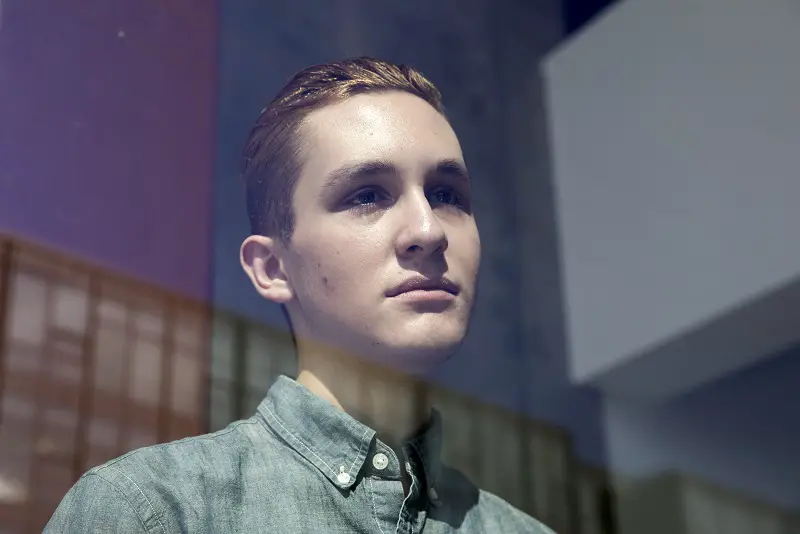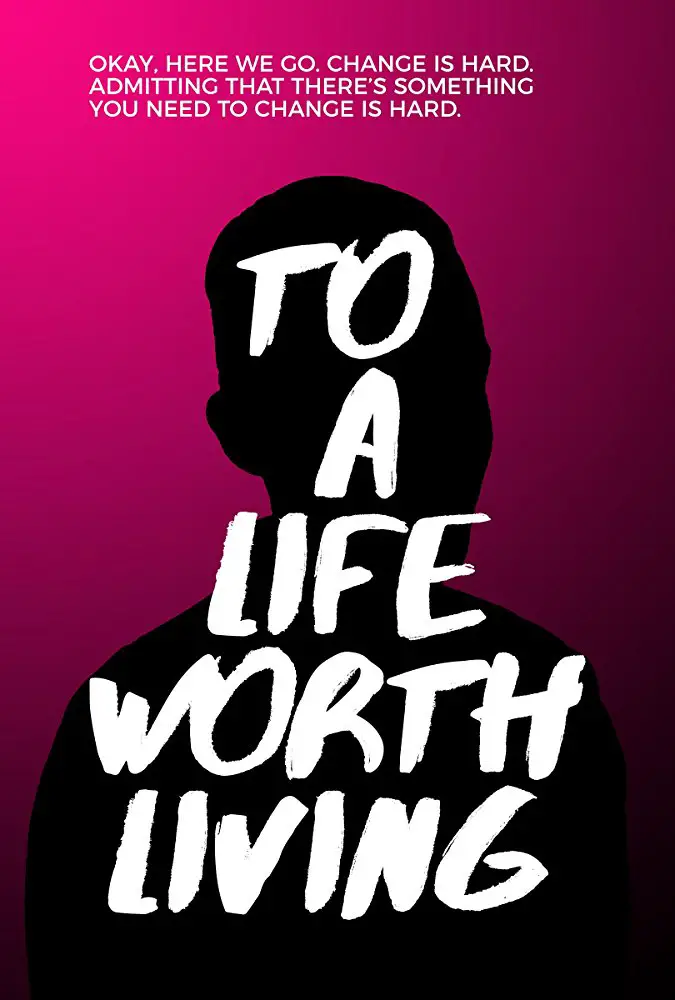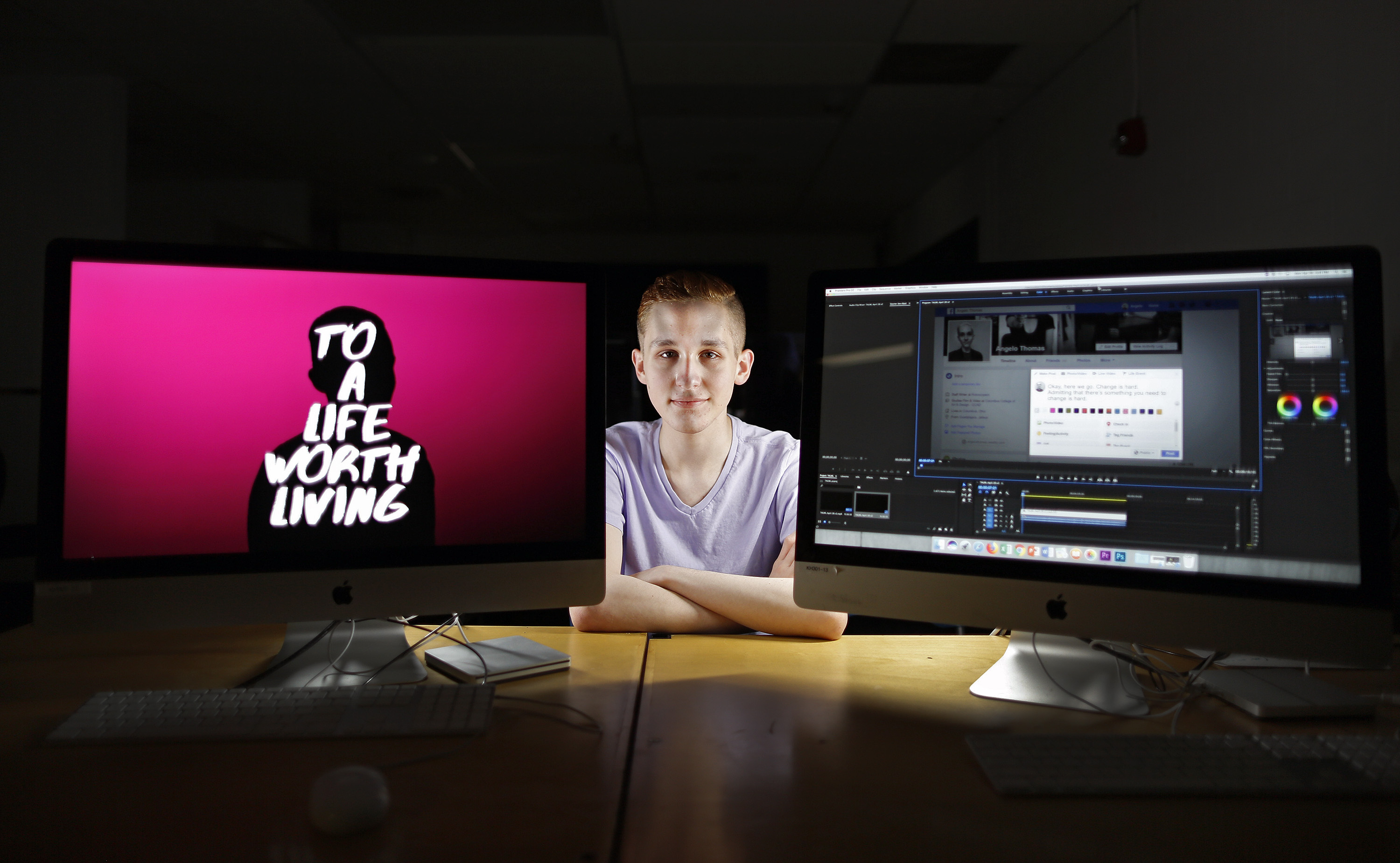When eating disorders are the topic of conversation, whether it be in a school setting, film or television, it typically is not inclusive of all who face them. This is due to the preconceived idea of what an eating disorder is, “a woman’s issue.”
Film student Angelo Thomas of Columbus College of Art and Design recalls learning about anorexia in high school. He, then struggling with the disorder himself, remembers feeling as though he couldn’t have anorexia after reading an article called “Anorexia: The Woman’s Disorder.”
Thomas and many others have faced this uncertainty because of how society presents eating disorders and how they are taught. He even thought if he did say he had anorexia, people wouldn’t believe him.
Thomas continued to struggle with anorexia through most of high school and the beginning of college. It wasn’t until last December when he faced a turning point in his battle. When Thomas’ family took a trip to Disneyland, he found himself consumed with his weight and the calories he took in, rather than the place around him that many refer to as “the happiest place on earth.”Feeling depressed and lacking in energy, Thomas decided he “didn’t want to live like that.”
In February he sought treatment from a program for six hours a day, five days a week. It was here that the sophomore film student decided to combine his passion with his own personal battle with anorexia to create a documentary. “I’ve always known I wanted to be involved in filmmaking […] but it wasn’t until recently that I felt like I found my voice and sense of purpose as a filmmaker.” “To a Life Worth Living” documents Thomas’ decision to seek help and begin recovery and can be viewed here.
Haley Newlin: How did you finally come to terms that you were struggling with this disorder that made you feel like others wouldn’t believe you had?
Angelo Thomas: I came to a point where I realized that I wasn’t living anymore. I was just going through the motions. I was miserable, and it just sort of hit me that I didn’t want to be like that anymore.
At that point, I wasn’t really worried about what anyone would think about my eating disorder and my decision to take a month off from school to go to treatment. I was focused on what would be best for me and my health, and my brother and friends were super supportive and that same attitude of “do whatever it takes to get better.”
HN: Why do you think anorexia was perceived as “The Women’s Disorder” for so long?
AT: I think it’s because anorexia is most common in girls and women. I think there are societal reasons that women feel pressure (more so than men) to look a certain way, and that can often lead to body dysmorphia and eating disorders. I think men who struggle with eating disorders are afraid to speak up because they feel like the terminology isn’t even applicable to them. I know that’s how I felt at least.

HN: What inspired you to share your story in “To a Life Worth Living?”
AT: Last year, I made the documentary “Felicia DeRosa: Transcendent” about a transgender woman for my video class. I was really moved by her [Felicia] strength and courage in sharing her story and in trusting me with making the documentary.
I remember talking to my dad about “Transcendent” after he watched it, and he said it made him think about transgender people in a different way — and that’s when it hit me that I could do something special with the passion I have for filmmaking. I could utilize film, specifically documentary, to tell important and meaningful stories, and that’s something I never considered before making that film.
HN: How did you create the title for “To a Life Worth Living?”
AT: The night before we shot the studio interviews, I got a tattoo with a friend of mine from treatment. It says, “life worth living,” accompanied by the symbol for NEDA, the National Eating Disorders Association. “Life worth living” is a phrase that I heard throughout my time in treatment and working towards a “life worth living” is what I feel like was (and still is) the biggest motivation in my recovery.
HN: What did creating this documentary mean for you as someone who has faced this illness?
AT: The four years in which I struggled with anorexia were without a doubt the hardest and darkest of my life so far. To be able to turn an experience that negative into something positive was amazing, and I feel like making the film has been an important part of my recovery and moving forward.
HN: How did you follow your instructor’s advice and make the documentary “emotional and messy?”
AT: We shot all the studio interviews (featured in the documentary) in one day, back-to-back. During my interview I was talking about it all and looking directly at my brother, and I could see that he was getting a little choked up.
Looking at him and talking about how much my life has changed and everything that I’ve been through was difficult to do, but I only did one take of that interview (and every other interview) because I wanted the responses to be genuine and I wanted that raw emotion to come through.

HN: What are you hoping “To a Life Worth Living” accomplishes? How do you hope it connects to viewers?
AT: I hope that the film encourages people who are suffering from eating disorders to speak up about their struggles and ask for help. It’s the hardest thing I’ve ever had to do, but I think if there were more voices and support for people with eating disorders, I wouldn’t have been so afraid to take that step.
I also feel like the message of the film is applicable to everyone, not just people with eating disorders, and it’s that you absolutely have the power to change your life — that power comes from within, and when you find it, hold on to it and never let go because that’s when your life changes.
HN: Are you considering any future projects like “To a Life Worth Living” or “Transcendent?”
AT: I would love to. I recently watched “Love, Simon” and read the book that it’s based on, and it really inspired me as someone who’s struggled to come to terms with being gay myself. I think there’s potential for a film with that sort of spirit with a protagonist who has an eating disorder. I’d love to write that and explore that idea.

















